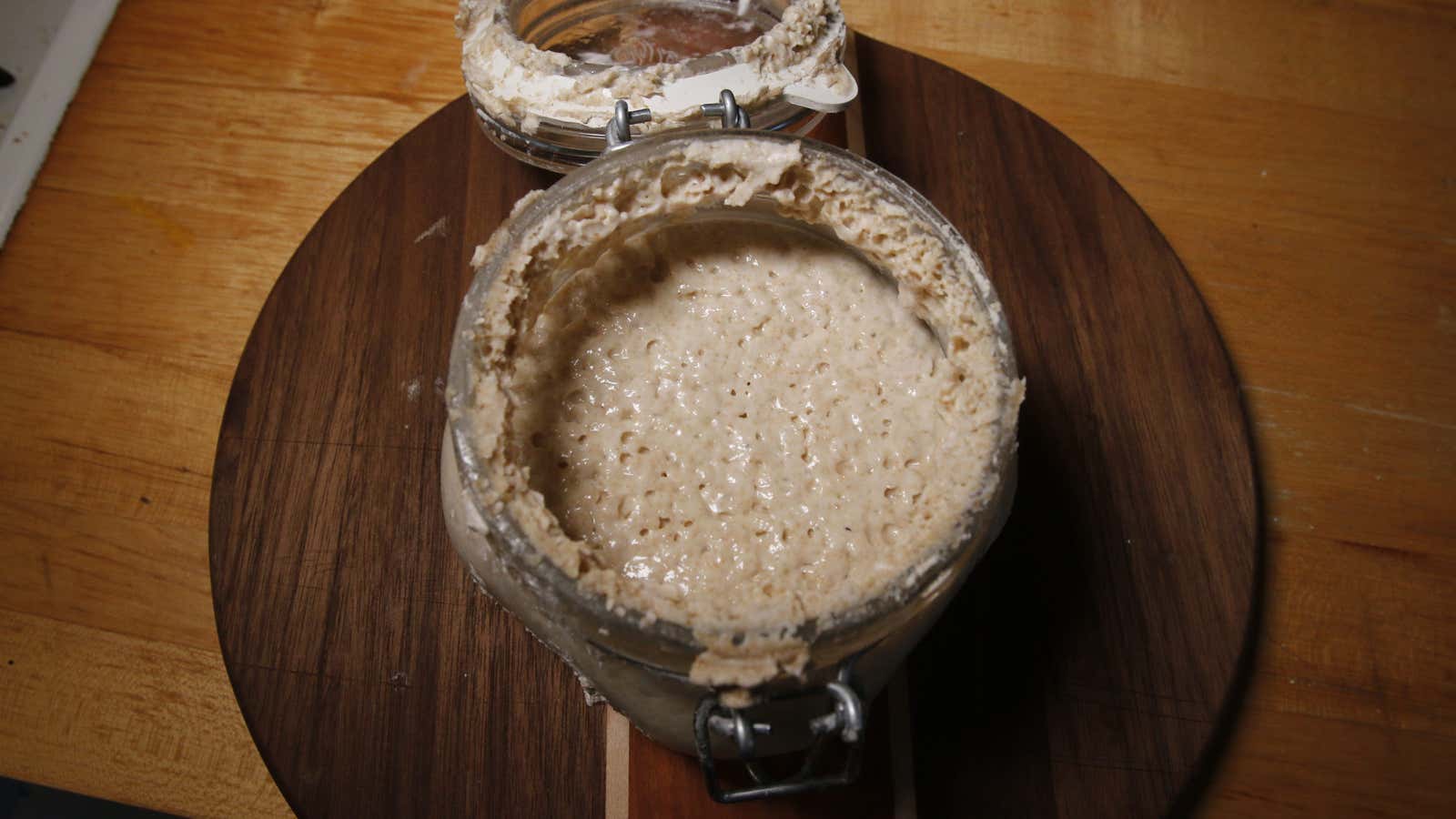Of all the self-care hobbies to emerge during the time of coronavirus quarantine, one of the most popular seems to be ambitious baking projects. What better way to pass the time than to transform the murky reaches of your pantry into tasty treats?
Fresh, home-baked bread is an especially delicious staple to experiment with, and it doesn’t require much in the way of ingredients or hands-on work: 99% of the process is just waiting for chemistry to happen. Unfortunately, a key element of that chemistry—yeast—seems to have joined the ranks of toilet paper and hand sanitizer.
From supermarket shelves to Amazon, yeast is increasingly hard to find. Flour, too, seems to be in short supply, and I’m sorry to say that without some kind of flour, bread just ain’t gonna happen. But, if you can find flour, you can make bread—even without yeast.
Now is a great time to make your own sourdough starter, a naturally fermented goo that can replace yeast as a leavening agent in bread and requires only flour, water, and time. Using a starter to make bread takes longer than using yeast, but the result is well worth it: A more complex, tangy, nutty flavor, and a chewier texture.
Here’s the basic science: Flour naturally contains a mixture of wild yeast and bacteria. When mixed with water, starch in the flour is converted to the sugars glucose and maltose. Yeast love to eat those, and then emit carbon dioxide. As the carbon dioxide bubbles are captured by gluten protein strands in dough, they cause the mixture to rise and form the nice “crumb” that Paul Hollywood is obsessed with. Free-floating yeast and bacteria in the atmosphere in your kitchen can also join the party (the “sour” tang comes from lactic acid bacteria).
The very first time you make a starter, the process can take up to a week of waiting and periodically mixing in more flour and water (some people include grapes or yogurt). The recipe below is based on this guide from King Arthur Flour, plus my experience.
How often do you need to feed your starter? Every other week is probably fine—longer than that, you might start to see it turn pink and slimy. The short answer is that you’ll know it’s dead if you feed it and nothing happens.
And if you’re asking why you should periodically discard some of the starter even in the midst of a flour shortage, it’s because as the yeast feast and multiply, there’s more competition for the flour you’re adding in. You need to make sure they’re getting plenty to eat, even if that means thinning the herd a bit. Plus, unless you’re planning to open a bakery, you’ll wind up with way more starter than you need.
Once you have a starter going, you can keep it in your fridge indefinitely, long after the coronavirus crisis has passed, as long as you continue to cultivate your little colony of yeast and bacteria by periodically feeding it fresh flour and water. I’ve kept my starter alive for about a year now; the starter at renowned Paris bakery Poilâne dates to 1932; San Francisco’s Boudin sourdough starter dates to 1849.
But after you put your starter in the fridge, it becomes dormant, and loses some of its leavening power. When you’re ready to bake a loaf, you’ll need to pull your starter out about 12 hours in advance and reactivate it with a fresh feeding. That will transform the starter into levain, which you can then use as an ingredient in your bread dough (or pizza, focaccia, bagels, or any other leavened dough!), along with flour, water, and salt. Here’s my recipe. Make sure to save a bit of the levain, which you can then put back into your jar of starter in the fridge. And repeat!
